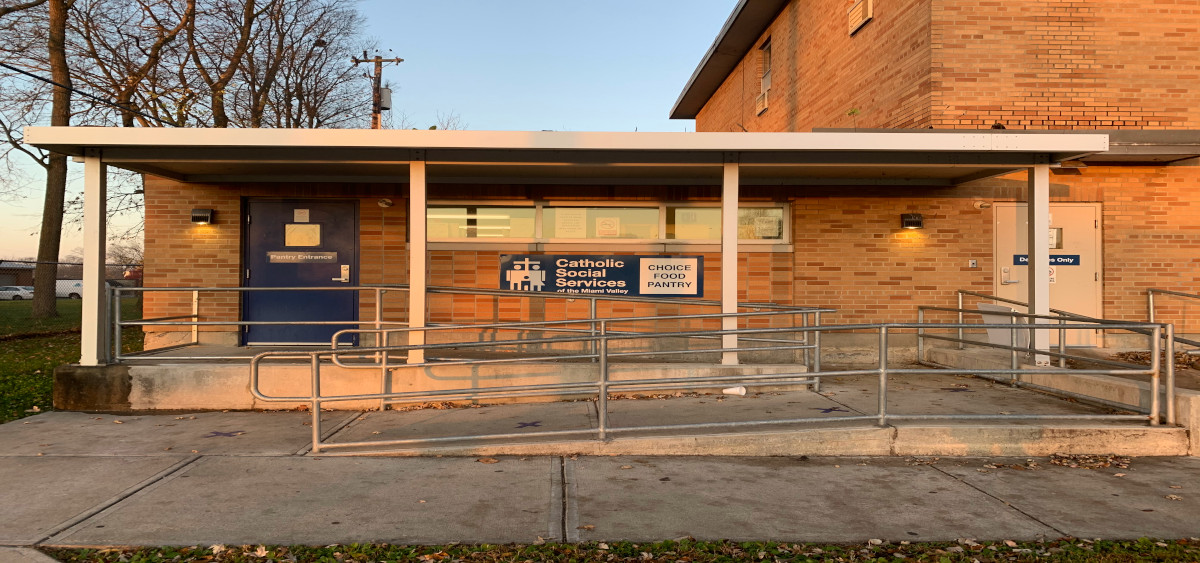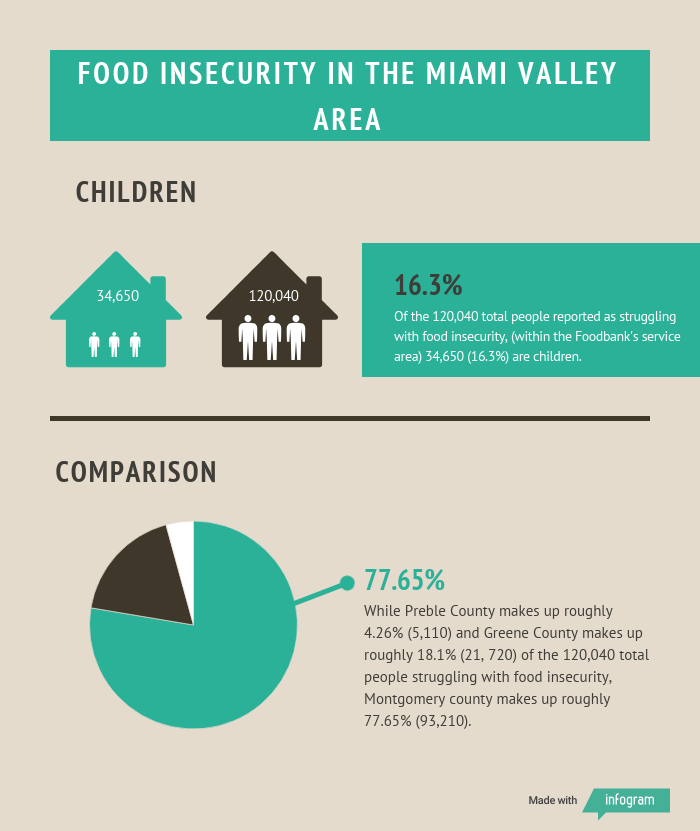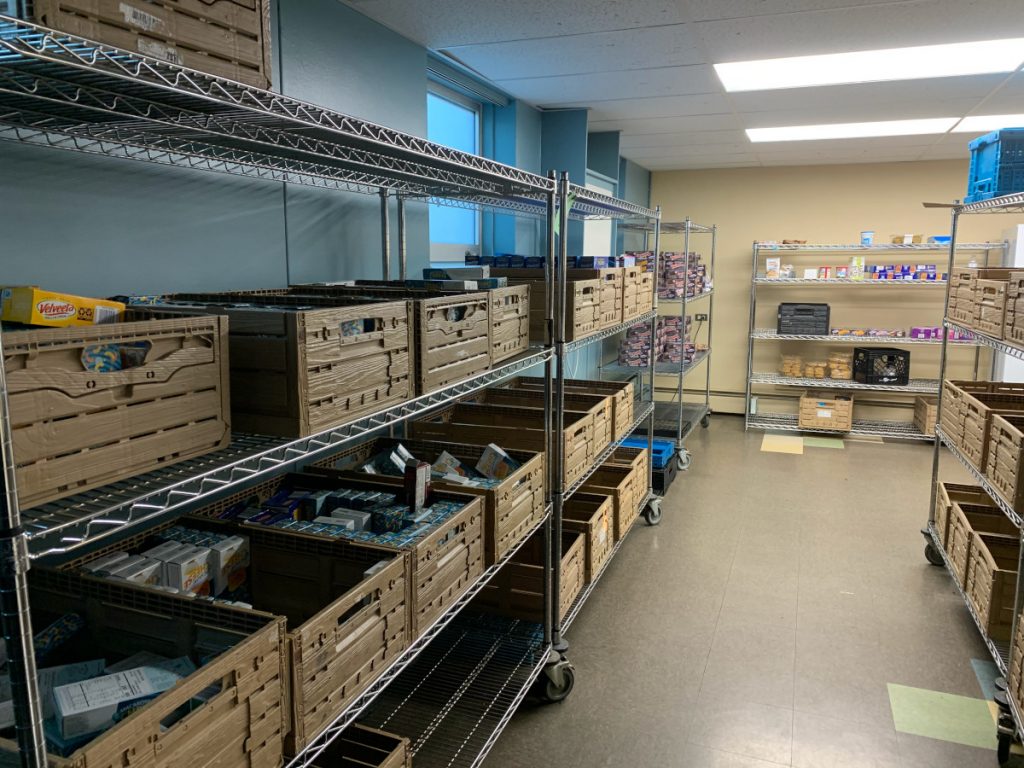
Miami Valley Assistance Program Keeps Food On Tables and Lights On
By: Julie Trouten
Posted on:
DAYTON, Ohio—As America nears a year of dealing with the coronavirus pandemic, the people behind community support systems are fighting as hard as ever to continue to help. Catholic Social Services of the Miami Valley has had to adjust their Choice Food Pantry model, in operation for over 40 years, to meet the demand.
Coronavirus and the economy
The Miami Valley consists of three counties: Greene, Montgomery and Preble. According to the Ohio Department of Health’s coronavirus data, the Miami Valley saw more than 26,000 COVID-19 cases before the end of November, and the daily number of cases continues to rise. All counties reported spikes in cases beginning in November. In addition to the deaths and sometimes debilitating illness, coronavirus has also forced many out of their jobs.
Unemployment on the rise
In September, 6.97% of the Miami Valley’s jobless rate rose dramatically, nearly doubling the 2019 average.
Montgomery County contributed its 8.8% unemployment rate to September’s average, 0.8% higher than the state of Ohio and 1.1% higher than the national average.
Poverty and the support systems of the Miami Valley
The downturns add to the existing need within the area. According to estimates from the 2019 American Community Survey of Poverty Status in the Dayton Area, the population of roughly 140,000 contained around 38,000 people living below the poverty line. The impoverished face many stressors – perhaps the most important: food insecurity.

The Foodbank in Dayton serves the Miami Valley helping local food insecurity relief operations.
Such food banks make connections with farmers and grocery stores, receive aid from the government, etc., to ensure the food supply. These food banks can directly aid clients from their own stock, or help other pantries and programs in the area through distribution. In order to maintain a line of distribution, the Foodbank must have a fleet of trucks and staff at the ready to make routine deliveries.
Pantries operate as supplemental relief, some providing only enough food to a family for a week or operating only as an emergency food pantry for those in severe need. Smaller than food banks, pantries are limited to what they can reasonably serve. However, they still must have multiple sources of food to stock their shelves in case any step in the distribution chain breaks down.
Ash Cummings, Coordinator of the Choice Food Pantry—one of the many pantries within The Foodbank’s network—describes the distribution process in this audio clip:
Choice Food Pantry and its changes

The Choice Food Pantry was named after the business model it followed for over 40 years.
Clients are checked in with an intake form to assess family size, ages of those within the households, dietary restrictions/information that would affect their pantry selection and possible support needed beyond the pantry services. In the choice model, clients are allowed to walk through the pantry, with the help of volunteers and staff, to pick out items for the week. In allowing clients to choose their own food, Choice reduced food waste.
However, due to COVID-19, that model has transitioned to a pre-packaged box model.
Unless other concerns or needs are expressed, clients are given boxes and followed up with when available. Not only did Choice lose the ability to cater toward its specific clients’ needs, the pantry and CSSMV also lost the extra contact with clients that could help alleviate issues beyond food insecurity.
“It’s been hard for us because what we love about our pantry is the person-centered approach,” said Laura Roesch,Chief Executive Officer of CSSMV. “We know people need more from us than just the food, and we just can’t give them that.”
In order to follow safety and health regulations for COVID-19, the pantry has cut down on the number of clients allowed in the lobby during the intake process – further limiting the volunteer/staff-to-client contact.
The highest volume to the pantry came in April, where 100 clients were served each day. The number of clients once spiked to 126 clients served in just two-hours. Since then the pantry has seen a gradual return to the usual 80 client daily average.
However, with winter and the holiday season approaching, the daily average has gone up to 90 clients and could continue to rise. In order to allow more clients in from the elements, extra rooms are being cleaned and repurposed for faster intake processing.
CSSMV going beyond Choice

Despite the limited contact, the increased demand for other services within CSSMV has also been met.
The Neighbors-Helping-Neighbors Utility Assistance Program has been the largest requested service thus far. Pre-pandemic, CSSMV would typically assist six households per week with emergency utility assistance payments. That number increased to 10-12 per week. As the need exceeded capacity, the organization had to curtail the number of clients assisted.
Before the end of November CSSMV was on track to providing more than $80,000 in direct client assistance in the form of a one-time emergency utility payment (water, gas, or electric bill). That was an increase of about 25% of direct emergency financial assistance provided in 2019.
CSSMV also offers an array of poverty-relief related, and other social work based resources, a list and description for which can be found on their website.
Despite the growing client base and challenges brought on by the pandemic, CSSMV has continued to serve the community.
“Our question was never to ourselves, ‘do we stay open?’ we just stayed open,” Roesch said.

